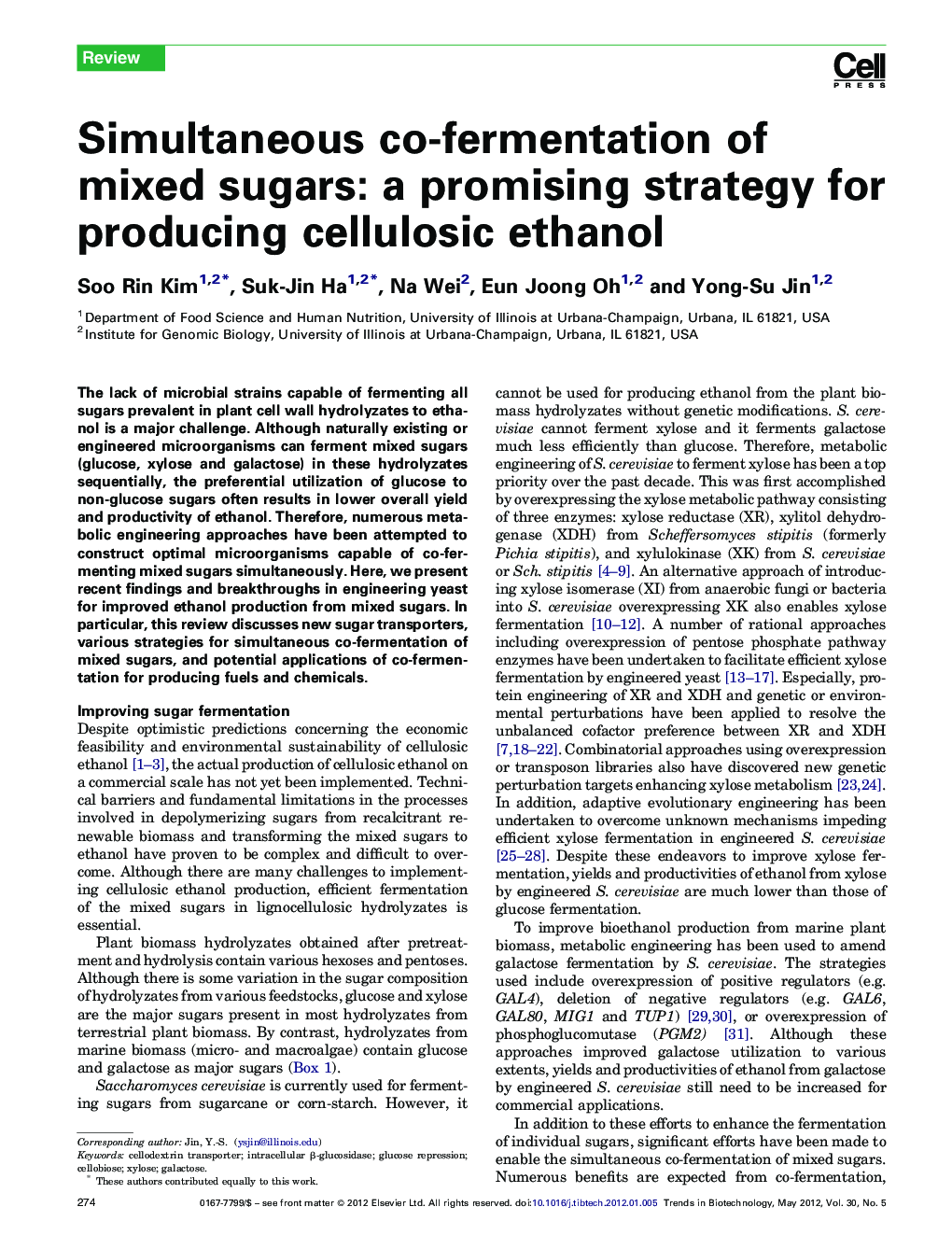| Article ID | Journal | Published Year | Pages | File Type |
|---|---|---|---|---|
| 37288 | Trends in Biotechnology | 2012 | 9 Pages |
The lack of microbial strains capable of fermenting all sugars prevalent in plant cell wall hydrolyzates to ethanol is a major challenge. Although naturally existing or engineered microorganisms can ferment mixed sugars (glucose, xylose and galactose) in these hydrolyzates sequentially, the preferential utilization of glucose to non-glucose sugars often results in lower overall yield and productivity of ethanol. Therefore, numerous metabolic engineering approaches have been attempted to construct optimal microorganisms capable of co-fermenting mixed sugars simultaneously. Here, we present recent findings and breakthroughs in engineering yeast for improved ethanol production from mixed sugars. In particular, this review discusses new sugar transporters, various strategies for simultaneous co-fermentation of mixed sugars, and potential applications of co-fermentation for producing fuels and chemicals.
